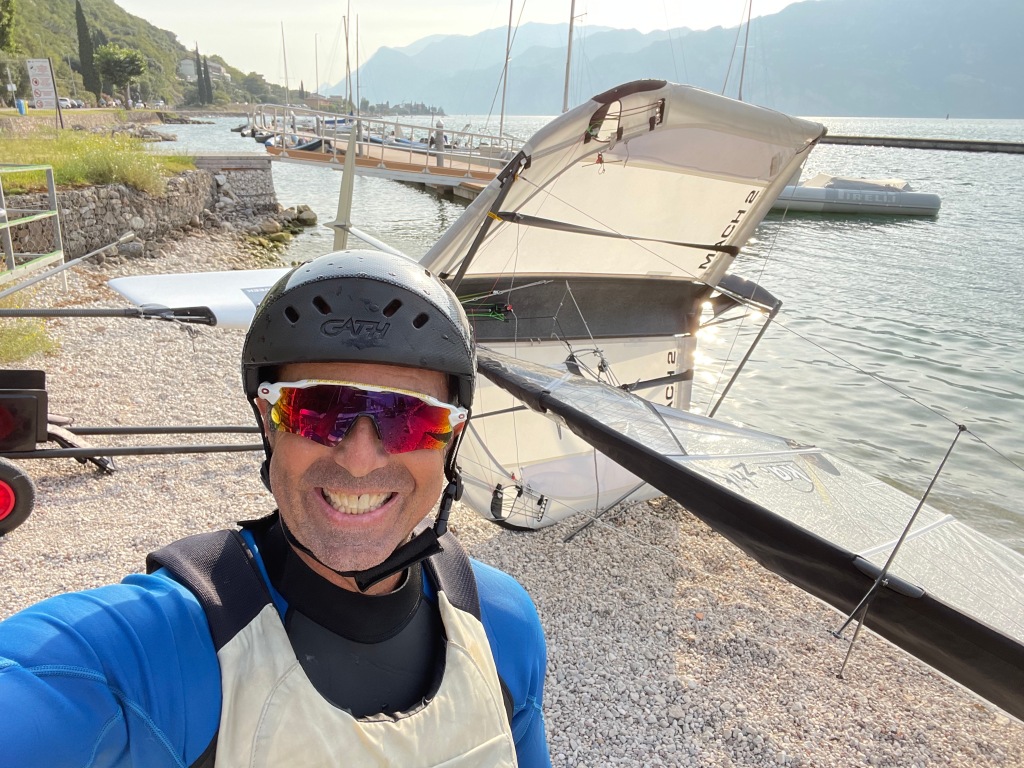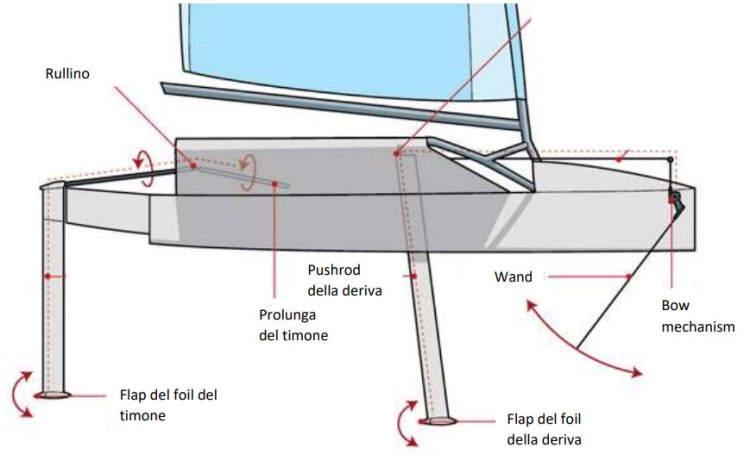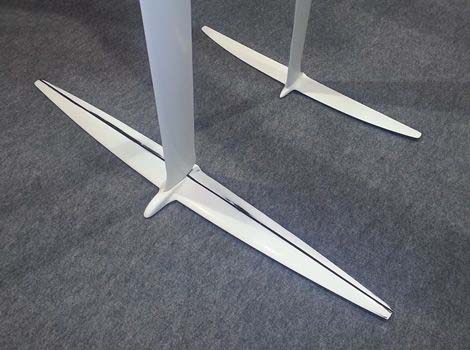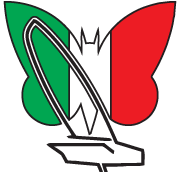Thus far I have resisted naming my Moth … it’s not mine of course, just mine for this regatta. I registered her as “Flight Risk” which is the name of my Moth in Santa Barbara … a great name and quite fitting for me as well as for my boat 🙂
But today I found the perfect name for this Moth: Piccola.
A good day: no flailing, no dumb mistakes, nothing wrong and the boat had no issues. I even wore my life jacket 🙂 We flew around for hours and got used to each other, and it was so great. Toward the end of the day the wind picked up and we were blazing. On some of the downwinds I think I went faster than I have ever gone; I don’t have a GPS so could not tell. (I have a GoPro with me but of course forgot the mount; I am thinking to mount it somehow – tape will do in a pinch – and that would give me videos to share as well as GPS tracks. Stay tuned!)
As this little Moth picks up speed, she starts to sound two high notes like a flute. Two different tones coming from the boom; maybe there are holes which cause the sound. Like … a piccolo! Hey, what a perfect name! Although of course a Moth is a girl, so Piccola. Which means “little” in Italian, but also “baby”.

Today I learned something super important about Mothing; for experienced Mothers this is 101 stuff, but for me it was eye-opening. You will remember the discussion about the wand, and how it controls the trim tab on the back of the main foil to adjust the boat’s “ride height”.
You might have wondered about attitude. Let’s revisit that diagram:

At the bottom of the rudder is a smaller foil which doesn’t have a trim tab. However the angle of the foil can be adjusted. (rudder is “timone”) The entire rudder can be tilted slightly forward, increasing the angle of attack, or sightly back, decreasing the angle. The tilt is controlled through a clever mechanism by rotating the tiller extension. (“prolunga del timone”) Rotate the extension clockwise (looking toward the bow) it tilts the rudder back, lowering the stern and raising the bow. Rotate counter-clockwise and it tilts the rudder forward, raising the stern and lowering the bow. Since the tiller is always in your hand, you can always adjust the attitude of the boat. You may not be surprised to hear: this matters!
I’ve never really messed around with this before – silly me – today I did, and I discovered it is super helpful. See a set of waves coming? Rotate clockwise, raise the bow, no problem. Flat water? Rotate counter-clockwise, lower the bow. Piccola loves being bow down (I can see you smiling, you J/70 people out there). At sufficiently high speed leaving the bow up causes sudden dips and wild crashes. Lowering the bow delivers beautiful smooth flight. As long as I raise the bow for waves 🙂

these designs have evolved to more and more high aspect, wider and narrower
Another thing I learned – again probably in the 101 category – going upwind you can point higher with the bow down, and going downwind you can point lower with the bow up. Not sure why this is, but sure it is so.
I found myself talking to Piccola a lot. About her attitude 🙂 Now I understand why that control is in your hand at all times …
